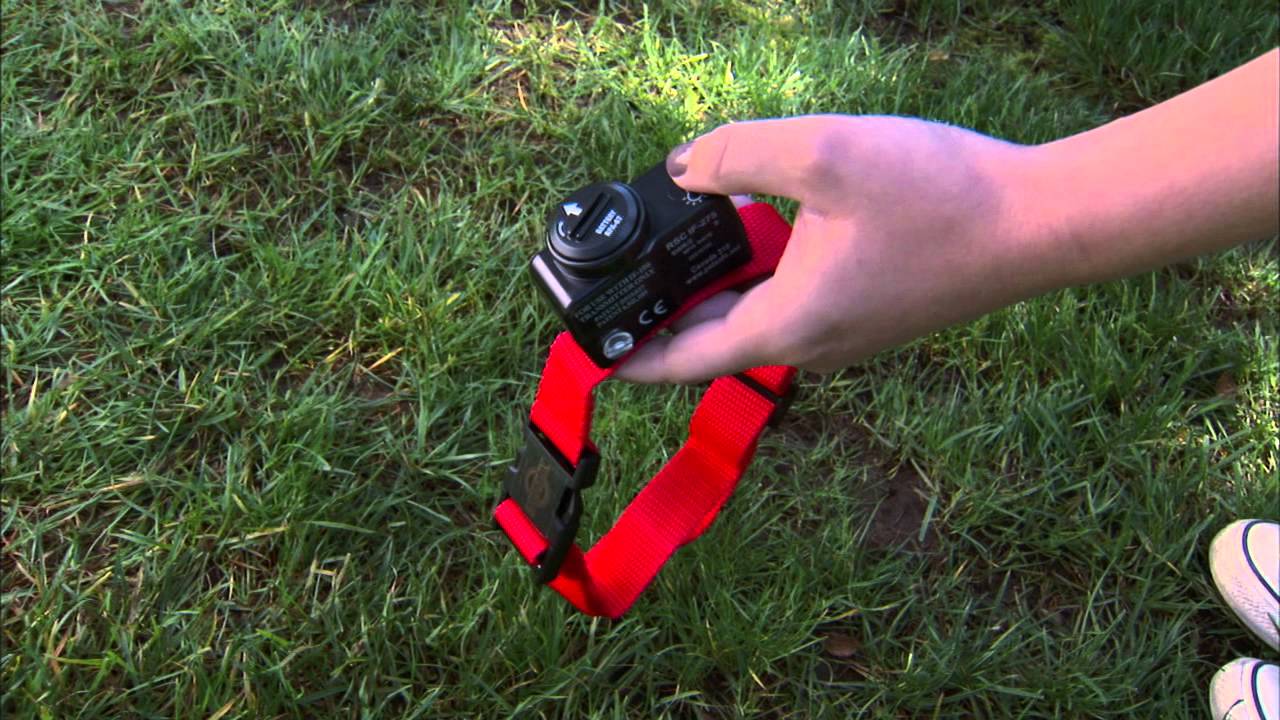As a dog owner, you want to keep your furry friend safe while also giving them the freedom to enjoy the outdoors. With limited space in small yards, traditional fences may not be an option. That’s where wireless dog fences come in. But with so many options on the market, it can be overwhelming to choose the right one.
In this comprehensive guide, we’ll explore the top-rated wireless dog fences for small yards. We’ll cover different types of wireless dog fences and their benefits, as well as factors to consider when choosing the best one for your furry friend.
From in-ground fences to wireless systems with mobile apps, we’ll provide you with everything you need to know to keep your dog safe and happy. So let’s dive in and explore the world of wireless dog fences!
What is a Wireless Dog Fence?
Wireless dog fences are becoming increasingly popular among pet owners who want to provide their furry friends with a safe and secure outdoor environment without compromising their freedom. Unlike traditional fences, wireless dog fences use a wireless signal to create a boundary around a specific area, usually a yard. This boundary is defined by a circular coverage area, and the dog wears a waterproof collar that receives the signal to keep them within the designated area, which is great for dog owners who want a more flexible and portable option.
Benefits of a Wireless Dog Fence
If you own a small yard and want to keep your furry friend safe, a wireless dog fence may be the perfect option for you. Not only does it provide a safe boundary for your pet, but it also offers flexibility, convenience, and cost-effectiveness. A wireless dog fence allows pet owners to set up a boundary quickly and easily without the hassle and expense of installing a physical fence.
But how does it work? A wireless dog fence uses a receiver collar and a transmitter to create an invisible boundary around your yard. When your dog approaches the boundary, the collar beeps, warning them to retreat. If they continue to approach the boundary, the collar will administer a static correction. The training process typically takes around 21 days, and many wireless dog fences offer different levels of correction and tone-only mode to cater to your pet’s needs. Plus, most wireless dog fences are waterproof, rechargeable, and have a long battery life, ensuring that your pet stays safe and secure.

Types of Wireless Dog Fences
Wireless dog fences offer an excellent option for pet owners who want to keep their dogs safe and secure within their yard. There are various types of wireless dog fences available on the market, each with unique features and benefits. In this article, we’ll take a closer look at different types of wireless dog fences and highlight their pros and cons to help you find the right one for your pet.
Invisible Fences
Invisible fences for dogs are commonly used to establish boundary limits without the need for physical fences. The two primary types of invisible dog fences are wired and wireless, with wired fences requiring the installation of a physical boundary wire that sends a signal to the pet’s collar when they approach the border. Wireless fences use a radio frequency signal to create a circular boundary around the transmitter.
The best options for wireless dog fences for small yards include the Halo 2+ and the SpotOn Invisible Electric Fence. Wired dog fences, such as the PetSafe Basic In-Ground Fence, are also a great option for pet owners with small yards. The installation process for a wired fence involves measuring the area, setting up the transmitter indoors, and burying the wire underground.
Underground Fences
Underground fences are a popular option for pet owners who want to create a boundary for their dogs without installing a physical fence or opting for traditional invisible fences. This type of invisible fence uses a wired fence system that is buried underground and connected to a transmitter. The transmitter communicates with a collar worn by the dog that receives a static correction if it approaches the boundary line.
The effectiveness of underground fences in containing dogs depends on the consistency of the training process and the collar’s correction level. However, they are generally considered more reliable than wireless fences that can be affected by interference. The wired system of underground fences also allows for greater flexibility in creating boundary shapes and sizes that can be customized to meet the unique needs of the yard. Installation of underground fences can be a bit more involved than wireless fences, but it provides a permanent and more secure boundary solution for pet owners.
Electric Fences
Electric fences, also known as invisible fences, are a popular option among pet owners to keep their dogs contained within a specific area. These fences work by using a collar that emits a static correction whenever the dog gets too close to the fence’s boundary. While electric fences may seem intimidating, they are generally safe for dogs when used correctly. However, some pet owners are concerned about the use of shock collars and the level of correction, which is why it’s important to carefully consider the training process and the collar’s settings.
When it comes to popular electric fence options, there are several models to choose from. One of the most well-known brands is the PetSafe Wireless Containment System, which provides a circular coverage of up to ½ acre and features a tone-only mode for training purposes. Another popular option is the SportDOG In-Ground Fence System, which allows for customization of the boundary shape and size and features multiple levels of correction. The Extreme Dog Fence Professional Grade System is another well-regarded option that includes a rechargeable collar battery and additional wire for larger yards.
The Perimeter Technologies WiFi Fence System provides a mobile app for easy customization and includes additional transmitter options. Finally, the Educator E-Fence System is a great choice for pet owners who prefer vibration correction rather than static correction, and it offers a 21-day training program for optimal results. Overall, electric fences offer a safe and reliable way to contain dogs and provide peace of mind for pet owners.
Virtual Fences
Virtual dog fences are a type of wireless dog fence that works by creating an invisible boundary around your yard using a GPS signal and a receiver collar attached to your dog’s neck. The boundary is typically circular and customizable, allowing you to set the diameter based on your yard’s size. When your dog approaches the boundary, the receiver collar vibrates or emits a warning tone, reminding your dog to return to the safe zone. If your dog continues to approach the boundary, a static correction level is triggered, deterring them from crossing.
Many pet owners prefer virtual fences over other types of wireless dog fences because they offer more flexibility in setting the boundary size. They are also less invasive than traditional fences since they don’t require digging or construction. Additionally, virtual fences can cover larger areas than physical or underground fences without the need for additional wire. The receiver collar battery life typically lasts for 2-3 weeks, depending on the model, and some virtual fences offer a mobile app for the collar, letting pet owners track their pet’s location and receive notifications on their phone.
Some of the popular virtual fence models on the market include the Garmin Sport PRO, which offers circular coverage of up to ½ acre, 60 hours of battery life, and a built-in beacon light for visibility. Another option is the PetSafe Stay & Play Wireless Fence, which covers up to ¾ acre and has a battery life of up to 3 weeks. It also includes a mobile app for the receiver collar, allowing pet owners to adjust the settings, track their dog’s location, and receive notifications on their phone.
Consider Specific Factors When Choosing a Wireless Dog Fence for a Small Yard.
When it comes to finding the right wireless dog fence for your small yard, there are several factors to keep in mind. The size of your yard, the number of dogs you have, and the level of correction you feel comfortable with are just a few of the things you should consider before making a purchase.
Type of Yard (Grass vs. Dirt)
Choosing the right wireless dog fence system for your small yard largely depends on the type of yard you have. If you have a grassy yard, you have more flexibility with your options since you don’t need to bury any wires for containment. So, you can go for any wireless dog fence system that suits your needs.
On the other hand, if you have a dirt yard, the installation process can be more complicated. In-ground electric fences require more groundwork and installation, but they provide greater and more reliable containment than wireless systems. However, if you’re not willing to go through the hassle of installing an in-ground fence, you can choose a hybrid or portable system. These combine both underground wiring and wireless perimeter signaling to provide reliable containment and are usually easier to install. Ultimately, the type of yard you have and your preferences will determine the type of wireless dog fence system that is right for you.
Range Coverage
When selecting a wireless dog fence for a small yard, it is crucial to pay attention to the range coverage. This feature determines the area within which the pet can roam freely without being corrected via static shock or a warning tone. The goal is to ensure that the coverage area encompasses the entire yard to provide the pet with enough space to run around safely.
To determine the appropriate coverage area, pet owners should take the time to measure the yard correctly and assess the shape of the space. The typical range of wireless dog fences varies from ½ acre to 1 acre. Owners can use this range to compare and select the fence system that best suits their small yard. It is equally essential to consider going for a more comprehensive wireless fence system that provides more coverage if the yard requires more play area for pets.
Ease of Installation and Setup
Many pet owners are drawn to wireless dog fences because of their convenience and simplicity compared to traditional fencing systems. While these systems often need installation, they usually do not require wiring. However, the installation process for wireless dog fences can differ depending on the model and the brand.
Some wireless dog fences require an easy setup process, such as setting up a circular shape using a centrally-based transmitter. Others use GPS to denote the area designation. Regardless of the model, pet owners should select a wireless dog fence that is easy to use and install, as they do not want to spend too much time figuring out the complexity of a system. This is particularly important if the owner is not tech-savvy, and the setup process can feel overwhelming. Additionally, the signal strength is crucial, and the system should be able to cover the desired range without any problems. Ultimately, selecting a wireless dog fence system with ease of use and a simple installation process is crucial to provide peace of mind and safety for furry family members.
Battery Life & Rechargeable Batteries
When it comes to choosing a wireless dog fence for small yards, one crucial factor to consider is battery life and the use of rechargeable batteries. A wireless fence that needs to be recharged frequently can be frustrating for pet owners and may not provide reliable protection for their dogs. Investing in a top-rated wireless dog fence with rechargeable batteries is an ideal solution as it can save you money in the long run compared to collars that require disposable batteries.
Among the top-rated wireless dog fences with rechargeable batteries in the market, the PetSafe Yardmax is a highly sought-after option. It has a remarkably long battery life of up to three weeks, with its rechargeable batteries only needing to be charged for a few hours periodically. However, it is essential to note that the PetSafe Yardmax is an in-ground system and requires wires to be buried. While it may not be a wireless fence in the truest sense, it’s a popular and economical option that provides excellent protection for pets within a 1/3-acre area.
Additional Collars & Extra Wire
When looking for a wireless dog fence for a small yard, it is crucial to consider the number of pets that need to be contained within the boundary. This is where the importance of additional collars comes into play. Some wireless fence systems only come with one collar, while others offer expandability options to allow multiple pets to use the same system. It’s crucial to choose a system that allows for multiple collars if you have more than one furry friend, especially if your pets have different sizes or temperaments that require varying correction levels. This feature can be an excellent solution for pet owners who wish to save money and have an efficient and economical approach.
Another aspect to keep in mind is the need for extra wire if you have a larger yard or specific boundary shapes. Some wireless fence systems include a limited amount of wire that may not be sufficient for larger yards. On the other hand, purchasing extra wire can allow you to create a customized boundary shape or expand the coverage area. It is essential to pay attention to the number of collars and extra wire options when selecting a wireless fence system to ensure that it caters to all your needs. Ultimately, choosing a wireless fence system with expandability options can save pet owners time, effort, and money while providing a safe and secure environment for their furry friends.
Static Correction/Tone-Only Mode Options
Most wireless dog fences offer two modes of correction that can be customized to cater to your dog’s needs: static correction and tone-only mode. Static correction delivers a mild electric shock to your dog’s collar when they cross the boundary line, while tone-only mode produces a high-pitched beep that serves as a warning signal. The tone-only mode is an excellent option for well-trained dogs that only need a gentle reminder to stay within the boundaries. In contrast, static correction is more suitable for dogs that require some training to understand the fence’s limits.
To ensure that the correction level is appropriately adjusted and customized, it’s crucial to fit the collar correctly and understand your dog’s sensitivity and temperament. Most collar settings allow you to adjust the level of static correction to the appropriate level for your dog. Start with the lowest correction level and gradually increase it until your dog responds effectively. Remember, it’s essential to find the right balance between training your dog and ensuring their safety and comfort since the goal is to create a safe and secure environment for them.
Training Process/Correction Level Options
When it comes to wireless dog fences, correction levels are a crucial factor to consider. This aspect allows pet owners to customize the level of static correction on the collar to suit their dog’s size and temperament. Ideally, the collar should have adjustable static stimulation levels that can be increased or decreased as necessary. This feature ensures that the fence is safe, effective, and humane, making it an excellent option for pet owners.
Adjustable static stimulation is also vital because it allows pet owners to find the right balance between training their dog and ensuring their comfort and safety. Finding the right correction level is key to correcting the dog’s behavior without causing harm. Starting with the lowest level and gradually increasing it until the dog responds effectively is a recommended process. With the right correction level options and proper training, pet owners can transform the behavior of their dogs, making wireless dog fences an excellent investment for small yards.
Conclusion
In conclusion, when it comes to wireless dog fences for small yards, it’s important to consider factors such as range coverage, installation process, battery life, and correction level options. It’s essential to assess the specific needs of both the dog and the yard before making a purchase. Benefits of using wireless fences over traditional fencing options include a circular boundary and the ability to avoid physical fences. With the right wireless dog fence, pet owners can provide their dogs with a safe and comfortable environment while effectively correcting their behavior. Choosing the right wireless fence can be a worthwhile investment for pet owners looking to keep their dogs safe and secure.




